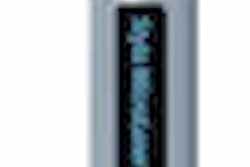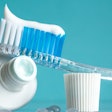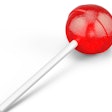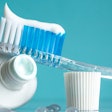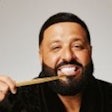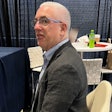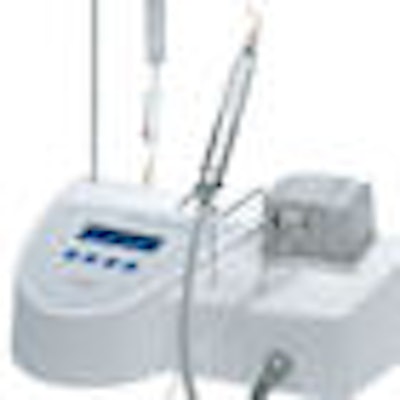
The use of very high-frequency sound waves -- ultrasound -- isn't just for bats and dolphins anymore. It is the new standard for everything from industrial cleaning to abdominal imaging. And now it's entering the world of dental surgery.
Ultrasonic surgery, also known as piezosurgery, can be used for cutting or grinding bone in sinus lifts, ridge augmentation, bone grafting, bone-block harvesting, and extraction of impacted teeth and roots. The ultrasonic devices developed for dentistry operate at frequencies of 20-35 KHz. The high-frequency sound waves sail right through adjacent soft tissues without damaging them, thus avoiding many of the complications associated with traditional surgical tools such as chisels and burs.
For example, perforation of the Schneiderian membrane occurs about a third of the time when conventional rotary instruments are used to do sinus lifts. But with ultrasound instruments the complication is relatively rare, noted Stephen Wallace, D.D.S., a New York University professor and a periodontist in private practice in Waterbury, CT. He was also one of the first people in the U.S. to perform ultrasonic dental surgery.
"We did a human study and showed the perforation rate is cut by 75%, to just 7%," Dr. Wallace said (International Journal of Periodontics and Restorative Dentistry, September/October 2007, Vol. 27:5, pp. 413-419).
In that study, Dr. Wallace and other periodontists from New York University and Israel pooled the analyses of their consecutive sinus lifting cases using the Piezosurgery device manufactured by Mectron Medical Technology. They noted a total of 7 sinus perforations in 100 procedures -- 3 caused by an extremely thin membrane and the others by the presence of a septum. The perforations all occurred during the hand elevation that followed use of the ultrasonic device, Dr. Wallace noted.
|
Which ultrasonic system should you buy? Five ultrasonic surgical systems are now commercially available in the U.S. for cutting or grinding bone in dental applications. Mectron Medical Technology was one of the first companies to offer this technology to the dental market with its Piezosurgery device. The Piezotome made by Satelec and marketed by Acteon is also available in the U.S., as is the Ultrasonic Bone Surgery device made by Resista and sold by Ace. Also available are Piezon Master Surgery by Electro Medical Systems (EMS) and VarioSurg made by NSK and sold by Brasseler. Other units currently awaiting 510(k) marketing clearance from the FDA are BioSaf's Easy Surgery and Esacrome's SurgySonic. The price of these systems ranges from $8,000 to $17,000. If you are interested in reading what users of these products think about these products and why, check out this forum. |
Another study found that using an ultrasonic device to perform bilateral sagittal split osteotomies of the mandible was more time-consuming compared to conventional techniques involving saws, chisels, and burs, but the osteotomies had a higher level of precision. In addition, the ultrasonic procedure offered the advantage of a blood-free surgical field (International Journal of Oral and Maxillofacial Surgery, September 2005, Vol. 34:6, pp. 590-593).
But not all the research has been positive. A recent report from Italy showing a 30.8% membrane-perforation rate in sinus-elevation procedures performed with the Piezosurgery device, versus a 23% perforation rate with conventional instruments (Clinical Oral Implants Research, May 2008, Vol. 19:5, pp. 511-515).
The investigators performed a prelift osteotomy for sinus access in 13 patients using the Piezosurgery system on one side of the maxilla in each patient and rotary diamond burs on the other side. Each side was completed in approximately the same amount of time, but 4 (30.8%) perforations occurred with the Piezosurgery device and 3 (23%) with the conventional instruments.
"It's the only negative report on the Piezosurgery device I've seen in the last 20 years," Dr. Wallace said. "In the program in which I teach residents from around the world how to use these instruments, they're uniformly successful using the Piezosurgery device, even though they're novices. So why there were these complications in the Italian paper, I can't explain."
Dr. Wallace learned how to use the Piezosurgery device about six years ago, at the elbow of one of its inventors, Tomaso Vercellotti, M.D., D.D.S., and he has been training other dentists how to use the technology ever since. He now teaches a two-year fellowship in implant dentistry at New York University that includes instruction in ultrasonic surgery. He also taught a course on ultrasonic surgery in September at the American Academy of Periodontology's annual meeting.
"None of the ultrasonic surgery companies were highlighted at the course at the AAP, but all of them were represented there," he said. "It was like a 'cage match' in wrestling, where people were able to try the five different machines on the same piece of bone. It was an opportunity people never have in their own clinical practices."
Jeff Thomas, D.D.S., a periodontist in private practice in Newbern, NC, is also a proponent of ultrasonic surgery. He just started his fourth year of teaching courses on ultrasonic surgery, and also performs hundreds of procedures with this technology every year in his own practice.
"I can't say I use it every day, but sometimes I use it three or four times in one day; it just depends on the type of surgery I'm doing," he told DrBicuspid.com. "It's not something you have to have. But it's something I couldn't do without. I can do more procedures less traumatically and more predictably than before ultrasonic surgery was invented."




